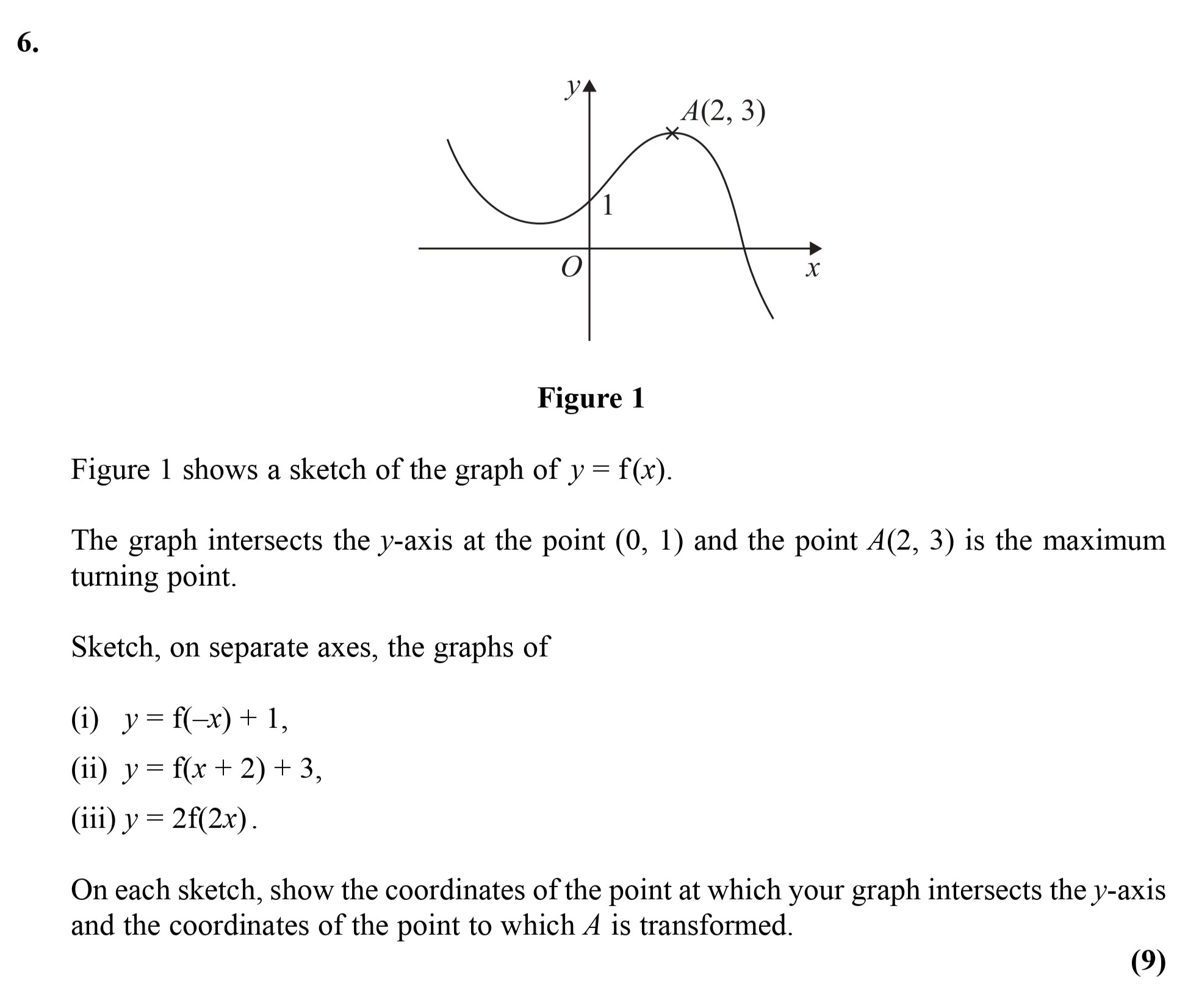Photo AI
Figure 1 shows a sketch of the graph of $y = f(x)$ - Edexcel - A-Level Maths Pure - Question 7 - 2010 - Paper 2
Question 7

Figure 1 shows a sketch of the graph of $y = f(x)$. The graph intersects the y-axis at the point $(0, 1)$ and the point $A(2, 3)$ is the maximum turning point. S... show full transcript
Worked Solution & Example Answer:Figure 1 shows a sketch of the graph of $y = f(x)$ - Edexcel - A-Level Maths Pure - Question 7 - 2010 - Paper 2
Step 1
y = f(-x) + 1
Answer
The graph of reflects across the y-axis and shifts it up by 1 unit.
- The y-intercept becomes , as the original graph meets the y-axis at and is shifted up.
- The maximum point A () transforms to due to the reflection and translation.
Thus, the coordinates of the transformed point are .
Step 2
y = f(x + 2) + 3
Answer
For the equation , the graph shifts left by 2 units and up by 3 units.
- The y-intercept, originally at , will now be at before the upward translation.
- The maximum point A transforms to , following the same left-shift and upward shift.
Hence, the transformed point A' is .
Step 3
y = 2f(2x)
Answer
In the equation , we have a horizontal compression by a factor of 2 and a vertical stretch by a factor of 2.
- The y-intercept alters, with the original at becoming , since it is multiplied by 2.
- The point A transforms to based on the transformation rules.
So, the final coordinates of the transformed point A' are .
